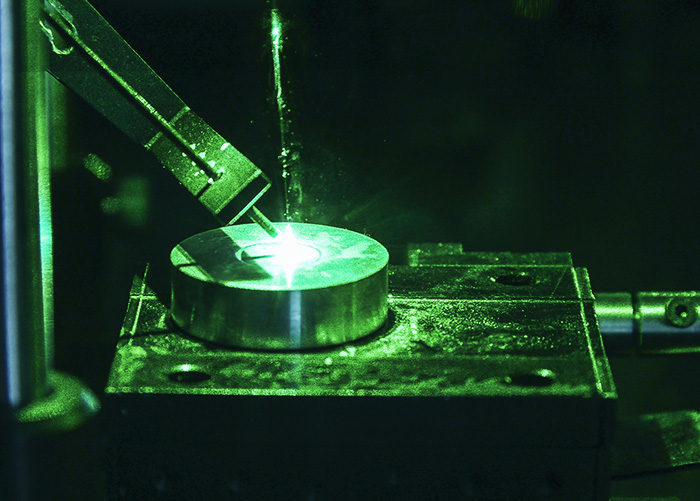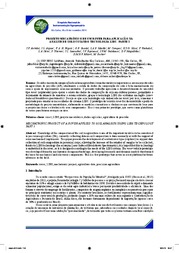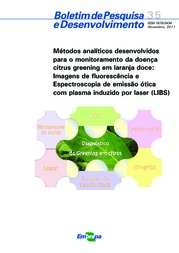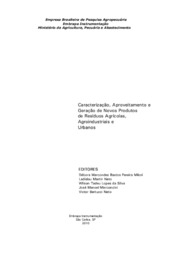Scientists use NASA technique to detect mercury in leachate
Scientists use NASA technique to detect mercury in leachate
The same technology employed by the Rover Curiosity to analyze the soil on Mars was successfully used in the countryside of São Paulo to detect the presence of mercury in leachate from landfills. The American space agency, NASA, resorted to laser-induced breakdown spectroscopy (LIBS) to detect water and chemical elements on Martian soil.
Now researchers from Embrapa Instrumentation (São Carlos, SP) have used LIBS to detect mercury in superconcentrated leachate samples from a landfill in Cachoeira Paulista, in the countryside of São Paulo state. Leachate is a dark liquid pollutant generated by the decomposition of organic waste, and mercury is one of the most toxic chemical elements for human health and the environment. The work was detailed in the paper Semiquantitative analysis of mercury in landfill leachates using double-pulse laser-induced breakdown spectroscopy, featured in the journal Applied Optics, by the Optical Society (OSA).
Developed by Embrapa, the technique has been used by the researcher Débora Milori in other applications, but it is the first time that it is used to detect and assess the mercury levels in landfill leachate. The results obtained open a range of possibilities to continue with the investigation, including the detection of other pollutants. The scientists now aim to improve the mercury detection limit, which is currently 76 parts per million (ppm).
The application of LIBS to assess mercury levels in the landfill percolate known as leachate is an environmentally clean technique, as it does not require the preparation of samples with chemical reactants. It is also considered fast, once it makes real-time measurements, and much cheaper than other techniques. Conventional methods demand sample preparation and generate chemical waste.
The study is a result of a postdoctoral study by the physicist Gustavo Nicolodelli, supervised by Débora Milori, in partnership with professors Carlos Renato Menegatti and Hélcio Jose Izário Filho from the University of São Paulo's Lorena School of Engineering (USP-EEL), and Bruno Spolon Marangoni, from the Physics Institute at the Federal University of Mato Grosso do Sul (UFMS).
Nicolodelli said that this work used a two-laser LIBS system (DP-LIBS) to obtain more intense plasma. The DP-LIBS development project was funded by the São Paulo State Foundation of Research Support (Fapesp - project no. 12/24349-0). “The advantage of the DP-LIBS system is to improve the technique's detection limit, making it more precise and sensitive when compared to conventional LIBS systems”, he clarifies.
To detect the presence of mercury, the researcher Débora Milori explains that the leachate was dried to produce a solid material, which was then turned into pellets. “As the laser hits the leachate pellet, the material absorbs the energy and undergoes a heating and molecule breakdown process, generating plasma in the surface. The initial plasma temperature nears around 50,000 K (close to the temperature on the surface of the Sun). The light emitted by this plasma can be captured and analyzed by a spectrometer, and this spectral information makes an analysis of the presence of several chemical elements possible; in addition, one can measure the amount of heavy metals such as mercury in minutes”, she states.
It is possible to make this analysis using conventional techniques, such as atomic absorption spectroscopy, X ray fluorescence, inductively coupled plasma emission spectroscopy, and inductively coupled plasma mass spectrometry. But the scientist explains that these methods, though very acurate, generally have a high cost of analysis per sample or require long digestion processes. Others also have energy sources that reuire special care for the protection of the operator. “That prevents real-time testing, and some of such techniques even generate chemical waste”, she informs.
Application
The Laser-Induced Breakdown Spectroscopy (LIBS) is a well-known analytical technique for analysis of solids, liquids, gases, and aerosols. Nevertheless, Nicolodelli explains that the technique offers lower sensitivity when compared to other spectrometry methods. One of the approaches to overcome such limitation is the use of the double pulse configuration, or DP. “Hence, the LIBS sensitivity can be improved due to the optimal coupling of the laser energy with the target and the ablated material, leading to more efficient analyte atom production in excited states”, she asserts.
Main toxic metals present in landfill fluids
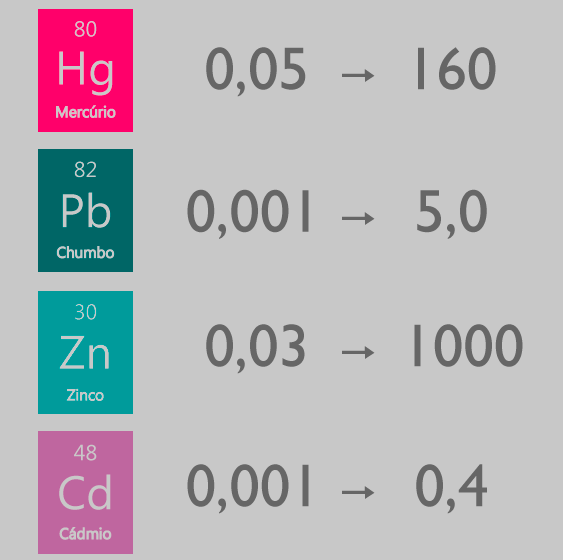
Concentrations in leachates (max. found in landfills) - (mg/L)
Source: Carlos Renato Menegatti, researcher from the Lorena School of Engineering (USP-EEL)
Contribution for analysis
The management and the destination of solid waste in Brazilian cities are among the biggest problems faced by city, state and federal governments. Despite landfills being presented as solution, they are also a reason for concern among authorities, as they are loaded with toxic heavy metals such as mercury, lead, copper, chromium and arsenic.
Such fluids contaminate not only the soil but also the groundwater, and are harmful to human health. Mercury, for example, can cause fetal neurological problems and malformation, and compromise child development.
Therefore, the Brazilian legislation determines that the environmentally acceptable mercury concentrations in landfill leachates cannot exceed 0.5 ppm (parts per million), but many often reach 160 ppm.
Thus, it is up to landfill managers to collect, drain and treat leachate before it is released into the environment, or risk being fined or having the landfill services paralyzed.
The LIBS technique can contribute to this stage of the process that analyzes and provides given, ensuring the levels allowed by law. Professor Carlos Renato Menegatti reports that, as he was already familar with the work developed by the researcher Débora Milori in the application of LIBS for soil analysis, he suggested the study of the technique to assess heavy metals in landfill leachate.
The research started in 2015, and in September 2016 Menegatti recollects that it was already possible to observe the first positive results of applying LIBS. According to him, they assessed ten superconcentrated solid samples produced through the process of distilling the percolated liquid, the leachate.
Detecting and assessing mercury levels is not an easy task. “Mercury is a volatile heavy element, and the heterogeneity of the samples makes quantifying it a bigger challenge. However, with the LIBS technique, it was possible to detect and quantify mercury levels”, he explains.
The tests were based on samples from the Cachoeira Paulista Landfill in the countryside of São Paulo, which gathers solid waste from cities in the Paraíba Valley. Milori explains that the leachate samples were prepared with known mercury concentrations for the elaboration of the technique's calibration curve. “Based on this curve, the LIBS system's limit of detection was estimated at 76 ppm”, she recalls.
Professor Bruno Spolon Marangoni, who helped the group in the analysis of the spectra obtained from the leachate samples, reports that the LIBS technique provided an enormous amount of information about other elements present in the sample and their atomic compositions.
Enthusiastic with the results obtained for mercury, the researchers are already working on other metals, such as lead, arsenic and cadmium. According to Menegatti, the expectation is to try to improve detection levels.
International recognition
The paper "Semiquantitative analysis of mercury in landfill leachates using double-pulse laser-induced breakdown spectroscopy” was featured on Applied Optics. The Optical Society (OSA) even sent a letter to the researcher Débora Milori highlighting the importance of the research. “A letter of congratulations for the impact caused by the publication of a paper is not common in the scientific community. The letter received from OSA has made us very proud, as it is a recognition from a hundred-year-old international society of optics on the quality of the work the group conducted”, the researcher underscores.
Translation: Mariana Medeiros
Joana Silva (MTb: 19.554/SP)
Embrapa Instrumentation
Press inquiries
instrumentação.imprensa@embrapa.br
Phone number: +55 16 2107 2901
Further information on the topic
Citizen Attention Service (SAC)
www.embrapa.br/contact-us/sac/

